
Prevention is the best defense. This applies in keeping your garden healthy to protect your plants from destructive diseases. Basic garden maintenance is imperative in ensuring that your plants, trees, soil, and flowers remain healthy all year round.
Follow these simple yet impactful ways to keep your garden in top shape and for it to add value to your property.
1. Water properly
Your garden needs water to thrive and survive. However, too much moisture can create a suitable environment for diseases to grow. Plant pathogens rely on water to reproduce. You can prevent plant diseases from invading your garden by performing watering techniques that minimize moisture levels.
Using drip irrigation and soaker houses is helpful in controlling moisture on your plants’ foliage. If you use a watering can, hold the leaves to water the roots directly.
Leaf problems can worsen when leaves are wet. It’s best to avoid overhead sprinkling to prevent leaves from getting smothered in water. If you must choose this watering method, pick a time when the leaves can dry instantly and the roots can have ample time to absorb the water. By doing so, you also minimize the risk of fungal growth in the soil which can cause the roots to rot and suffocate.
2. Keep an eye out for bugs!
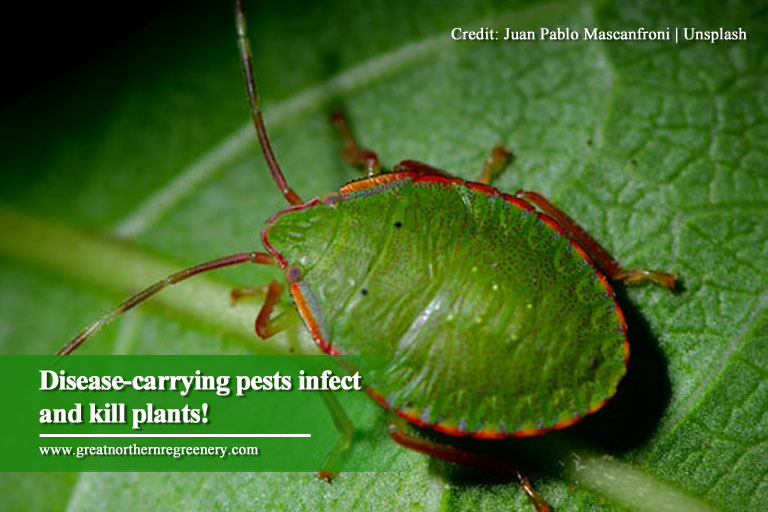
Insects can cause more damage to plants than what is visible to the eye. As a bug eats off a plant, it can create an opening that becomes an entryway for viruses and bacteria. Some insects are carriers of viruses and transmit diseases from one plant to another.
One of the most common carriers of viruses is aphids. Thrips (tiny winged insects that suck plant sap) are also known for spreading the plant life-threatening virus called impatiens necrotic spot virus. When left unaddressed, viruses can stress out plants until they wilt and die.
Keep your trees, plants, and shrubs free from pest infestation. By employing strict prevention measures from the get-go, you can save dollars on costly pest removal solutions later on.
3. Use the appropriate fertilizer
Want to ramp up the growth of your plants? Applying fertilizers is an effective way to achieve that. Just make sure to choose the right fertilizer and apply it in proper amounts. There is such a thing as over-fertilizing plants, and this can lead to root burns.
Root burns reduce the roots’ capacity to absorb water. In effect, the plant becomes more prone to stress, heat, and cold. So in essence, excess amounts of a certain nutrient can be harmful to a plant’s health.
You can determine which nutrients your plants need (including the correct amounts) by conducting a soil test. This prevents you from giving too much of one nutrient and less of another.
It also helps to check your plant’s appearance to know if it’s necessary to fertilize them. Below are some symptoms to spot:
- Light green or yellow leaves
- Leaves smaller than normal
- Fewer leaves and/or flowers than normal
- Leaves with dead spots
- Wilting of foliage
- Short, annual twig growth
- Dying back of branches at the tips
4. Choose disease-resistant plants
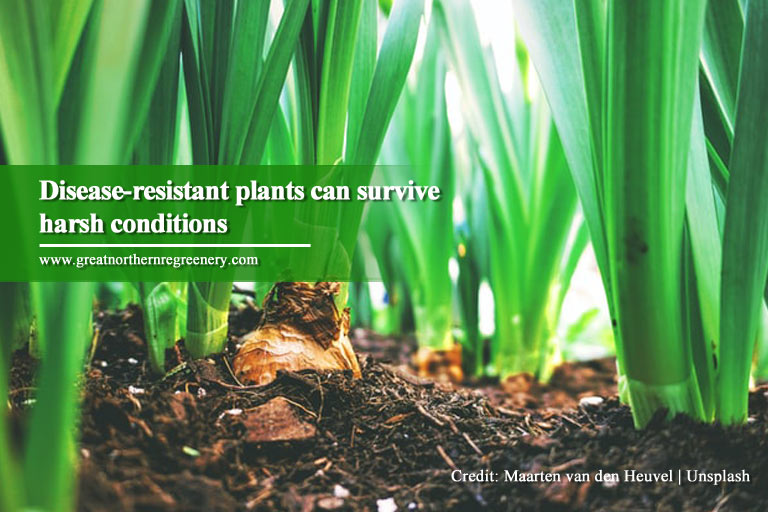
These plant varieties have a defense mechanism against the attacks of insects and diseases. Some plants can survive a pest problem by growing out a new root or shoot. Others produce chemicals that reduce insect feeding.
For example, there are tomato varieties that are resistant to “VFN,” which means they can fight off damage caused by fungi (e.g. Verticillium and Fusarium) and nematodes.
Garden designers and tree nursery staff can assist you in identifying disease-resistant plants. You can also refer to gardening books that may have a list of plants that have resistance to specific insects and diseases.
5. Plant on the right site
Where you grow your plant is as important as your choice of the plant variety. For instance, azaleas grow well in shaded areas. Plant it in a sunny zone and it will become susceptible to insects and diseases.
Plants also have an immune system that kicks into high gear when they are put under unfavourable conditions. When stressed out, plants are not able to fight off or recover from infections.
6. Maintain distance between plants.
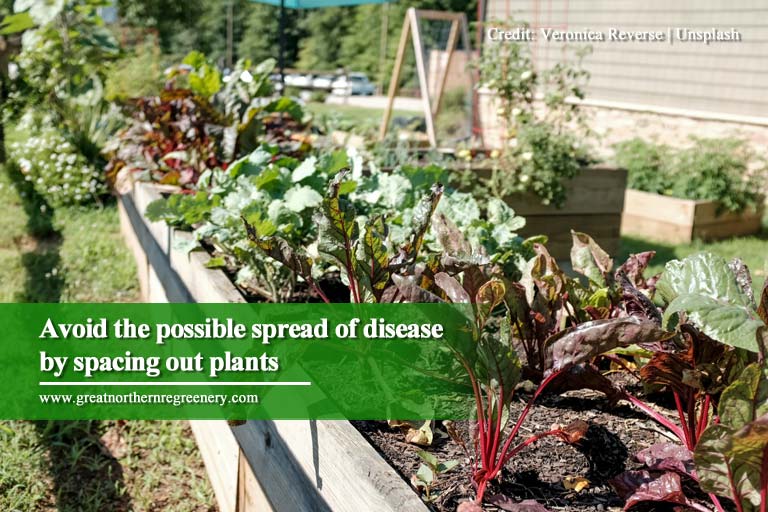
Avoid crowding plants and ensure that established plants have enough space to spread. It’s important to improve airflow in your garden to prevent the buildup of humidity which causes diseases like rust and mildew.
In addition, plants that are too close to each other may not grow well. This is due to competition for water, light, and nutrients. Diseases can also spread easily when plants are placed closely together. Besides maintaining distance, cut off old or damaged stalks to reduce the risk of disease.
7. Clean up during the fall.
Garden maintenance is a must all throughout the year, but it is particularly helpful to clean the garden in the fall. Doing so wards off chances of diseases and it is a way to manage existing diseases plaguing a garden.
Dead leaves can become a haven for diseases. Black spots, leaf spots, and leaf streaks are just a few of the diseases that can be minimized if dead leaves are removed and disposed of during the fall.
8. Allow yard waste to fully decompose.
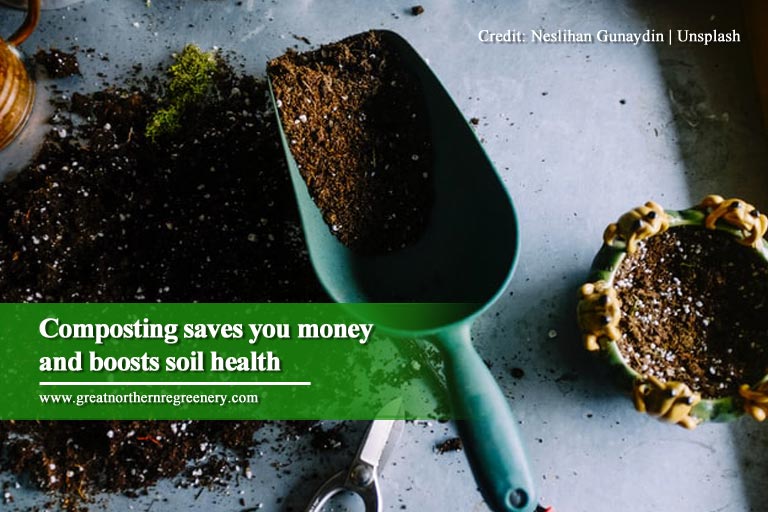
Various compost materials decompose at different rates. There are some that degrade just enough to be used in the garden, while other materials take more time. Let your compost degrade completely so it can produce high temperatures that kill off pathogens.
Putting your compost pile under high temperatures for extended periods prevents the development of possible diseases in your compost material which can potentially infect your garden. If you suspect your compost pile may be infected, do not use it as mulch on your plants.
9. Assess the plant before buying it.
The simplest way to prevent disease from setting foot in your garden is to never introduce them right from the start. Make sure a new plant is healthy and does not bring with it any disease.
For beginner gardening enthusiasts, it may be difficult to tell a healthy plant from a sick one. Look up images of healthy plants on the internet or in books and magazines. As a rule of thumb, examine the top of a plant. Don’t pick a plant that has rotten stems or dead spots.
Also, examine the root quality. Put your hand on the surface of the soil, with the stem of the plant between your fingers. Then slowly, invert the pot and shake the plant to loosen it. If needed, tap the edge of the pot to loosen the roots. Check to see if the roots are firm, white, and are spaced throughout the root-ball.
Mushy and dark-coloured roots indicate that a plant is unhealthy. The leaves and stem may look healthy, but it won’t be long before its roots kill the plant.
10. Prune at the proper time
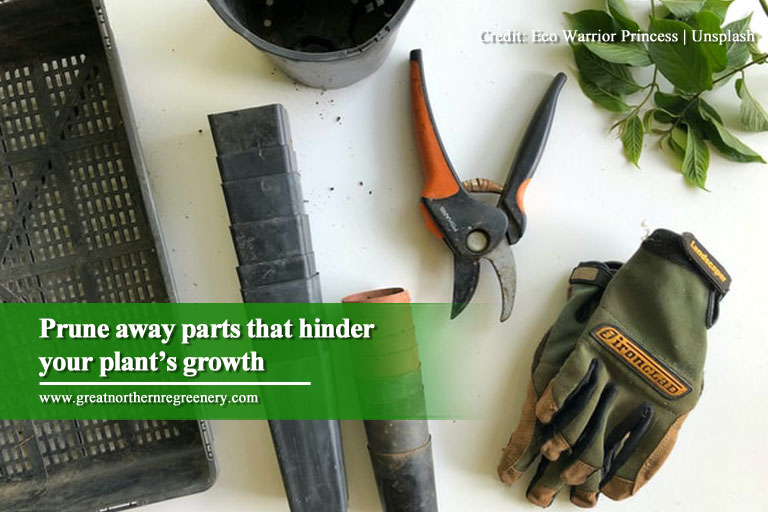
Trimming damaged or diseased limbs of trees and shrubs is better done during the last stretch of winter. This is because pruning in late winter stops disease and infection from affecting new growth in spring. It’s possible that winter storms can damage a tree, but it is still ideal to cut off a broken limb as soon as possible.
When pruning trees and shrubs, use sharp tools that ensure clean and fast-healing cuts. If you’re not familiar with the procedure, call a professional to prevent possible damage to your plant and property. An expert arborist can also recommend effective ways on how to maintain garden plants.
Like humans, gardens need tender loving care to achieve optimum health as well. Follow these garden care, cleaning, and maintenance tips to enjoy a healthy garden across all seasons.
If you’re looking for experienced arborists who can help you look after your garden, contact Great Northern Regreenery. We provide a wide range of tree and shrub care services for residential and commercial properties in York Region, Simcoe County, and nearby areas.
Call us now at (905) 775-7444 for a FREE inspection and assessment!





